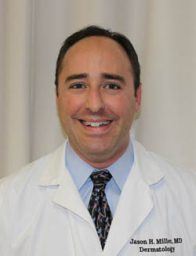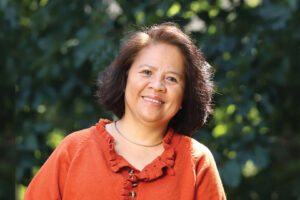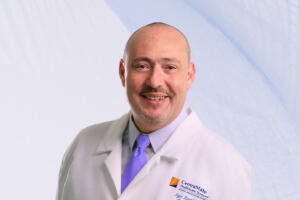It may happen while spending the day hatless at the beach, while mowing the lawn, or while attending a baseball game under the blazing sun. Afterward, it can mean hours of pain, aloe, lotion, and regret. But sunburn is more than just an inconvenience — it’s a painful reminder that the sun’s rays are more powerful than many think, and a warning sign that something far more dangerous may be happening.
Protect & Prevent
Most skin cancers are a direct result of exposure to the UV rays in sunlight, and the most common types of skin cancer — basal cell and squamous cell—tend to be found on sun-exposed parts of the body, according to Jason Miller, MD, a board-certified dermatologist with CentraState Healthcare System and Hametz & Picascia Dermatology Associates in Freehold. That’s why simple precautions can go a long way toward limiting exposure to UV rays, thereby preventing sunburn and lowering the risk of developing skin cancer.
UV rays reach the ground all year, even on cloudy or hazy days, but their strength changes based on the time of year and other factors. UV rays are stronger during the summer, with the strongest time of day being 10 a.m. to 4 p.m. “That’s when the risk of sunburn is highest, so the theory is that the risk for DNA damage also is at its highest, and that’s what can lead to skin cancer down the line,” Dr. Miller says.
For sunscreen use, Dr. Miller recommends a sun protection factor (SPF) of 30 or higher. Sunscreens labeled with SPFs as high as 100 and up are available, but they don’t necessarily provide a lot more protection. For instance, a sunscreen with an SPF of 15 filters out about 93 percent of damaging rays, while a product with SPF of 100 blocks out about 99 percent.
Since sunscreens do not block all UV rays, it’s important to protect yourself in other ways. Dr. Miller recommends staying in the shade whenever possible as the best way to limit UV exposure. “Of course, in a perfect world, we are avoiding the midday summer sun, but if you’re going to be out in the sun, make sure to wear sun protective clothing, hats, and sunscreen,” Dr. Miller says.
Early Detection
Early detection of skin cancer typically starts with an individual’s self-analysis, and Dr. Miller recommends using the “A, B, C, D, E” method to determine whether a mole or lesion should be cause for concern.
A: Asymmetric—One side of a mole or lesion looks different than the other. It is not uniform.
B: Border irregularity
C: Color— The mole changes in color over time.
D: Diameter—The mole’s diameter is increasing.
E: Evolution—Is the mole changing in any way? Is it growing, itching, or bleeding?
“Most of these are symptoms that are going to bring a patient into a doctor’s office,” Dr. Miller says.
Diagnosing Skin Cancer
Physicians on staff at CentraState have several unique methods available to help in both diagnosing and treating skin cancers. For example, Dr. Miller may refer patients to the MoleSafe Skin Surveillance Program at CentraState, in which a series of digital photographs of an individual’s body are taken and are used later to compare against a new set to determine whether moles and lesions are changing. The MoleSafe program is used to reveal melanoma at the earliest possible stage, and can improve accuracy when used in conjunction with a regular clinical inspection—detecting important sub-surface features and changes in existing moles. MoleSafe’s accuracy can also help in reducing unnecessary excision by providing another opinion before a lesion is removed, as all images are evaluated by trained melanoma specialists.
“It’s for patients who, after they’ve seen a dermatologist, want critical documentation of what their moles look like at one point in time,” Dr. Miller says. “It is of great benefit to those at higher risk for developing melanoma, including those with fair skin, many moles, a family history of melanoma, or who have had a lot of sun exposure and sunburns, especially during childhood.”
After an evaluation, doctors will perform biopsies on areas that look suspect to determine if the patient has cancer, and if so, the kind of cancer so they can create a treatment plan tailored to that patient’s needs. “It’s patient-centered, patient-specific therapy,” Dr. Miller says. “We are targeting each treatment based on each individual’s tumor location, size, etc. The common theory is if you find it early, it’s much easier to treat. If it’s small or hasn’t spread, it can usually be treated with simple surgery.”
A Breakthrough Treatment for Skin Cancer
 Dr. Miller may also refer his patients with non-melanoma skin cancers to the Statesir Cancer Center at CentraState for a newer treatment called brachytherapy, which is a form of radiation therapy. These types of cancers commonly occur on frequent sun-exposed areas, such as the nose. Excision can leave unsightly scars in these highly visible parts of the body, but brachytherapy provides an equally effective, pain-free treatment option with almost no occurrence of scarring. “It is also a good option when a tumor is located in a highly functioning area, such as the hand or lip,” Dr. Miller says.
Dr. Miller may also refer his patients with non-melanoma skin cancers to the Statesir Cancer Center at CentraState for a newer treatment called brachytherapy, which is a form of radiation therapy. These types of cancers commonly occur on frequent sun-exposed areas, such as the nose. Excision can leave unsightly scars in these highly visible parts of the body, but brachytherapy provides an equally effective, pain-free treatment option with almost no occurrence of scarring. “It is also a good option when a tumor is located in a highly functioning area, such as the hand or lip,” Dr. Miller says.
Dr. Miller stresses that early detection is the key. “It’s about finding things before they have a chance of getting larger or spreading, finding something that’s atypical or early melanoma before it has time to invade,” he says. “That makes them much easier to cure.”
For information on skin cancer screenings and treatments available at the Statesir Cancer Center at CentraState, or to request an appointment with Dr. Miller, call 866-236-8727 or visit www.centrastate.com/appt.





